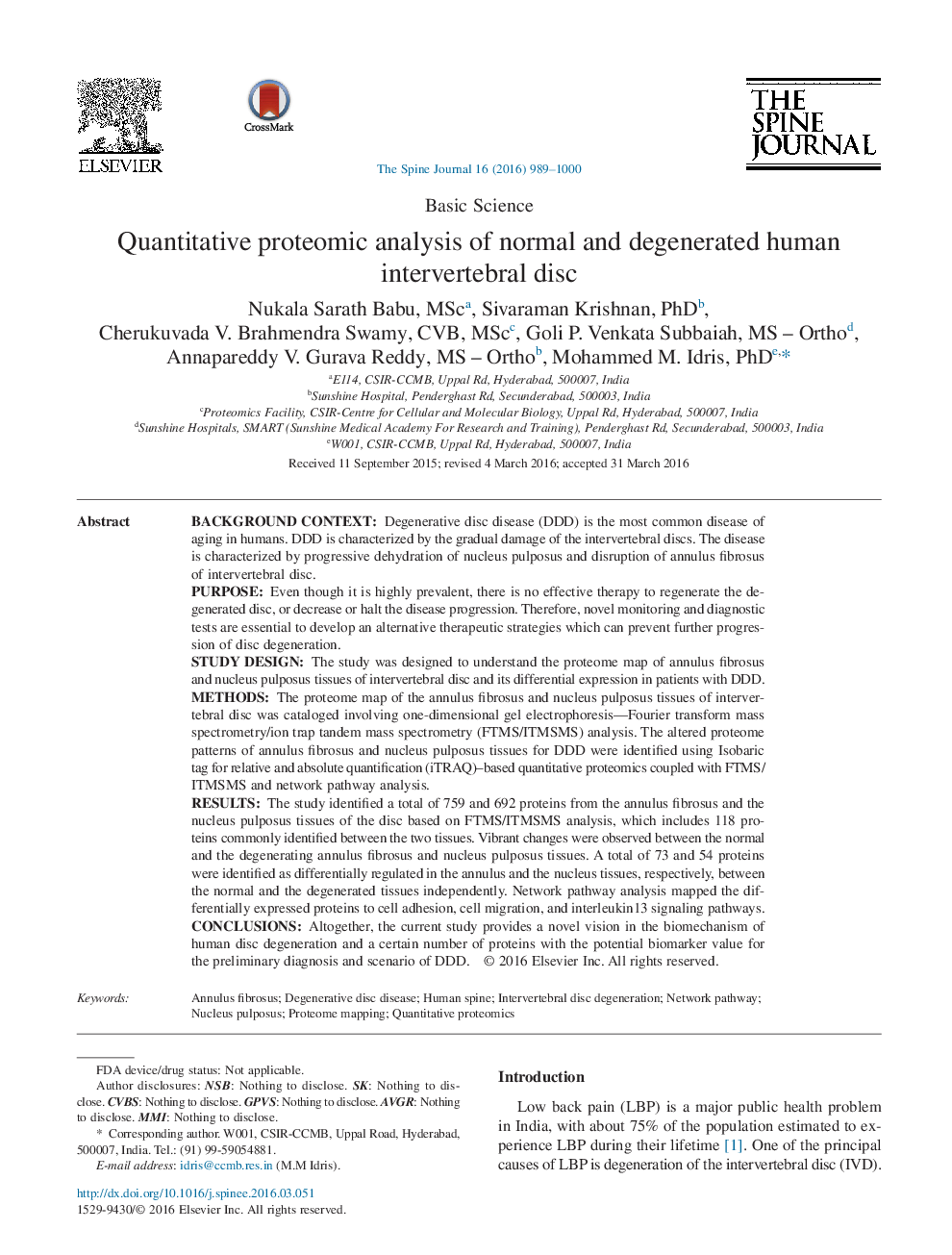| کد مقاله | کد نشریه | سال انتشار | مقاله انگلیسی | نسخه تمام متن |
|---|---|---|---|---|
| 4095797 | 1268547 | 2016 | 12 صفحه PDF | دانلود رایگان |
Background ContextDegenerative disc disease (DDD) is the most common disease of aging in humans. DDD is characterized by the gradual damage of the intervertebral discs. The disease is characterized by progressive dehydration of nucleus pulposus and disruption of annulus fibrosus of intervertebral disc.PurposeEven though it is highly prevalent, there is no effective therapy to regenerate the degenerated disc, or decrease or halt the disease progression. Therefore, novel monitoring and diagnostic tests are essential to develop an alternative therapeutic strategies which can prevent further progression of disc degeneration.Study DesignThe study was designed to understand the proteome map of annulus fibrosus and nucleus pulposus tissues of intervertebral disc and its differential expression in patients with DDD.MethodsThe proteome map of the annulus fibrosus and nucleus pulposus tissues of intervertebral disc was cataloged involving one-dimensional gel electrophoresis—Fourier transform mass spectrometry/ion trap tandem mass spectrometry (FTMS/ITMSMS) analysis. The altered proteome patterns of annulus fibrosus and nucleus pulposus tissues for DDD were identified using Isobaric tag for relative and absolute quantification (iTRAQ)–based quantitative proteomics coupled with FTMS/ITMSMS and network pathway analysis.ResultsThe study identified a total of 759 and 692 proteins from the annulus fibrosus and the nucleus pulposus tissues of the disc based on FTMS/ITMSMS analysis, which includes 118 proteins commonly identified between the two tissues. Vibrant changes were observed between the normal and the degenerating annulus fibrosus and nucleus pulposus tissues. A total of 73 and 54 proteins were identified as differentially regulated in the annulus and the nucleus tissues, respectively, between the normal and the degenerated tissues independently. Network pathway analysis mapped the differentially expressed proteins to cell adhesion, cell migration, and interleukin13 signaling pathways.ConclusionsAltogether, the current study provides a novel vision in the biomechanism of human disc degeneration and a certain number of proteins with the potential biomarker value for the preliminary diagnosis and scenario of DDD.
Journal: The Spine Journal - Volume 16, Issue 8, August 2016, Pages 989–1000
